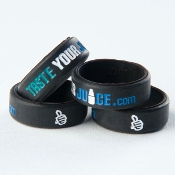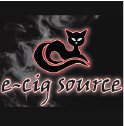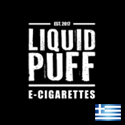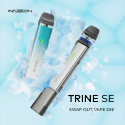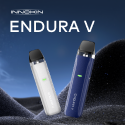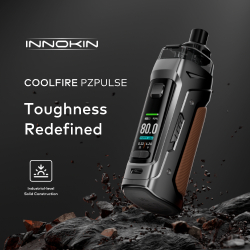Category: Battery Mooch
A BATTERY MOOCH POST: Xtar 25A/35A 2600mAh 18650…accurately rated, appears to be Molicel P26A
This cells looks and performs identically to the great performing Molicel P26A.
Xtar rates this cell at 25A continuous and 35A “max pulse discharge”. While both ratings are spelled out on the wrap in tiny text a different larger “35A” is much more clearly seen on another part of the wrap. I prefer to just see the continuous current rating shown this way to allow for direct comparison between cells.
The Molicel datasheet for the P26A only lists a 35A “maximum discharging current” rating with a temperature cutoff of 80°C. This means you can use the P26A at up to 35A as long as the cell stays below 80°C. This should be easy to do as 80°C is frakkin’ hot. Just realize that a malfunctioning or autofiring device could easily exceed this temperature by a LOT if you are set up to vape at 35A.
I am giving this cell a 25A continuous current rating since that is as high as you can go while not exceeding the 80°C cutoff. This matches Xtar’s 25A continuous rating. To extend cell life, minimize voltage sag, and increase your safety margin, I recommend staying at 25A or under per cell. That’s about 75W.
The two cells I tested delivered 2624mAh and 2625mAh. This is fantastic consistency.
Two cells were donated for the purposes of testing by Xtar (http://www.xtar.cc). Thank you!
Ratings graphic: https://imgur.com/a/mmEj3Vu
Test report: https://bit.ly/2Tukmmm
I want to work for the vaping community full time! If you feel what I do is worth a couple dollars a month and you would like early access to battery availability and testing news and a say in what I test then please consider becoming a patron and supporting my testing efforts: https://www.patreon.com/batterymooch
These tests only note the ESTIMATED ratings for these batteries at the time I tested them. Any battery that is not a genuine Samsung, Sony, Murata, LG, Panasonic, Molicel, or Sanyo can change at any time! This is one of the hazards of using “rewrapped” batteries or batteries from other manufacturers so carefully research any battery you are considering using before purchasing.
Misusing or mishandling lithium-ion batteries can pose a SERIOUS RISK of personal injury or property damage. They are not meant to be used outside of a protected battery pack. Never exceed the battery’s continuous current rating and keep the plastic wrap and top insulating ring in perfect condition.
Any rating in my ratings tables can change at any time as different grade cells appear on the market, we get swamped with fakes, or new information becomes available to me. Please, never assume that the ratings in the tables are permanent and will never change! Always download the latest version before considering any cell purchase.
To see how other cells have tested check out this link: https://www.e-cigarette-forum.com/forum/blog-entry/list-of-battery-tests.7436/

A BATTERY MOOCH POST: Lithicore 25A 4250mAh 26650…they say it is a LiPo, DO NOT BUY recommendation
This cell was not tested. Lithicore says that all of their documents can be verified and are backed by professional testing facilities. That’s good! We want every battery company to use good testing facilities and be fully committed to the results. Lithicore’s Material Safety Data Sheet (MSDS)*** safety document for this cell though lists the “chemistry” as the same one used for LiPo’s. That is a concern for me.
Because Lithicore says it has the same chemistry as a LiPo I am giving it a Do Not Buy recommendation. This does NOT mean it is “dangerous”! But we have so many cells we can choose from. I just prefer to not use round cells that use LiPo chemistry that can go into thermal runaway at a lower temperature and have a more violent reaction when in runaway (in case of an accidental short-circuit, mod failure, or EXTREMELY rare internal defect) when there are so many other great performing non-LiPo choices.
If the cell chemistry listed in the MSDS ever changes then I look forward to discussing the reasons for the change with Lithicore and testing this cell!
Four cells were donated for the purposes of testing.
Ratings graphic and MSDS: https://imgur.com/a/AKO7ZNd
Test report: https://bit.ly/2JPaYX8
I want to work for the vaping community full time! If you feel what I do is worth a couple dollars a month and you would like early access to battery availability and testing news and a say in what I test then please consider becoming a patron and supporting my testing efforts: https://www.patreon.com/batterymooch
These tests only note the ESTIMATED ratings for these batteries at the time I tested them. Any battery that is not a genuine Samsung, Sony, Murata, LG, Panasonic, Molicel, or Sanyo can change at any time! This is one of the hazards of using “rewrapped” batteries or batteries from other manufacturers so carefully research any battery you are considering using before purchasing.
Misusing or mishandling lithium-ion batteries can pose a SERIOUS RISK of personal injury or property damage. They are not meant to be used outside of a protected battery pack. Never exceed the battery’s continuous current rating and keep the plastic wrap and top insulating ring in perfect condition.
Any rating in my ratings tables can change at any time as different grade cells appear on the market, we get swamped with fakes, or new information becomes available to me. Please, never assume that the ratings in the tables are permanent and will never change! Always download the latest version before considering any cell purchase.
To see how other cells have tested check out this link: https://www.e-cigarette-forum.com/forum/blog-entry/list-of-battery-tests.7436/
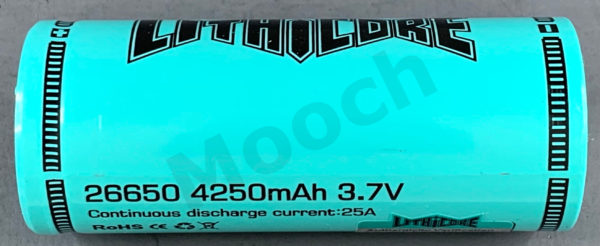
A BATTERY MOOCH POST: Lithicore 25A 3700mAh 21700…they say it is a LiPo, DO NOT BUY recommendation
This cell was not tested. Because Lithicore says it has the same cell “chemistry” as a LiPo cell I am giving it a Do Not Buy recommendation. If this cell ends up not being a LiPo, and the MSDS is updated, I will test this cell.
I recently posted about a large number of concerns I have about Lithicore and their cells (same post to all three sites):
• Facebook: https://www.facebook.com/batterymooch/posts/2406399516316287
• ECR (Reddit): https://www.reddit.com/r/electronic_cigarette/comments/cf6k3f/i_have_some_concerns_about_lithicore_batteries/
While I am happy to report that only a continuous discharge rating is on the wrap of this cell their web site (as of this date) lists a completely useless “Max pulse” rating of 40A.
Lithicore claims that they manufacture this cell in their factory. But Lithicore claims in their Material Safety Data Sheets (MSDS)*** that all six of their cells use the same battery chemistry as LiPo’s. That does not mean they are all dangerous! If it was true though it would mean that if they are misused or mishandled that they can go into thermal runaway, and possibly burst, at a lower temperature and that their reactions during runaway are more violent than the other Li-Ion battery chemistries we can use.
Lithicore’s MSDS’ list identical chemical compositions for all six of their cells, down to 1/100th of a percent. Even if all of them were actually made by the same factory, using the same chemistry, in my opinion they could not have the same percentages of chemicals, metals, plastics, etc., across four different sizes, six different capacity ratings, and multiple current ratings. Different capacity cells use different ratios of the chemicals. Cells with different current ratings use different thicknesses of metal foil to spread the cell goop on and different thickness and quantities of the metal tabs to conduct the current to and from the top and bottom contacts inside the cells.
A big reason why MSDS’ exist in the first place is to inform employees and first-responders of the risks involved if they need to handle a spill or fire involving a product. An incorrect MSDS makes responding properly harder to do.
If the MSDS is incorrect that would also mean that any vendor importing Lithicore cells into their country, like in the EU, would be submitting an incorrect document to the authorities. This means the wrong substances are being registered and could affect whether that vendor can sell the Lithicore cells they bought if the MSDS error is found. I suspect the vendors would be pretty unhappy to hear about that.
If the MSDS safety documents are accurate though then Lithicore is using the same chemistry as LiPo’s. This earns this Lithicore cell a Do Not Buy recommendation from me. With all of the other cells we can choose from, why buy ones that use the same chemistry as LiPo‘s?
Four cells were donated for the purposes of testing.
Ratings graphic and MSDS: https://imgur.com/a/P5XQ4bo
Test report: https://bit.ly/2SGcduQ
I want to work for the vaping community full time! If you feel what I do is worth a couple dollars a month and you would like early access to battery availability and testing news and a say in what I test then please consider becoming a patron and supporting my testing efforts: https://www.patreon.com/batterymooch
These tests only note the ESTIMATED ratings for these batteries at the time I tested them. Any battery that is not a genuine Samsung, Sony, Murata, LG, Panasonic, Molicel, or Sanyo can change at any time! This is one of the hazards of using “rewrapped” batteries or batteries from other manufacturers so carefully research any battery you are considering using before purchasing.
Misusing or mishandling lithium-ion batteries can pose a SERIOUS RISK of personal injury or property damage. They are not meant to be used outside of a protected battery pack. Never exceed the battery’s continuous current rating and keep the plastic wrap and top insulating ring in perfect condition.
Any rating in my ratings tables can change at any time as different grade cells appear on the market, we get swamped with fakes, or new information becomes available to me. Please, never assume that the ratings in the tables are permanent and will never change! Always download the latest version before considering any cell purchase.
To see how other cells have tested check out this link: https://www.e-cigarette-forum.com/forum/blog-entry/list-of-battery-tests.7436/

A BATTERY MOOCH POST: Lithicore 30A 2950mAh 20700…they say it is a LiPo, DO NOT BUY recommendation
This cell was not tested. Because Lithicore says it has the same cell “chemistry” as a LiPo cell I am giving it a Do Not Buy recommendation. If this cell ends up not being a LiPo, and the MSDS is updated, I will test this cell.
I recently posted about a large number of concerns I have about Lithicore and their cells (same post to all three sites):
• Facebook: https://www.facebook.com/batterymooch/posts/2406399516316287
• ECR (Reddit): https://www.reddit.com/r/electronic_cigarette/comments/cf6k3f/i_have_some_concerns_about_lithicore_batteries/
While I am happy to report that only a continuous discharge rating is on the wrap of this cell their web site (as of this date) lists a completely useless “Max pulse” rating of 40A.
Lithicore claims that they manufacture this cell in their factory. But Lithicore claims in their Material Safety Data Sheets (MSDS)*** that all six of their cells use the same battery chemistry as LiPo’s. That does not mean they are all dangerous! If it was true though it would mean that if they are misused or mishandled that they can go into thermal runaway, and possibly burst, at a lower temperature and that their reactions during runaway are more violent than the other Li-Ion battery chemistries we can use.
Lithicore’s MSDS’ list identical chemical compositions for all six of their cells, down to 1/100th of a percent. Even if all of them were actually made by the same factory, using the same chemistry, in my opinion they could not have the same percentages of chemicals, metals, plastics, etc., across four different sizes, six different capacity ratings, and multiple current ratings. Different capacity cells use different ratios of the chemicals. Cells with different current ratings use different thicknesses of metal foil to spread the cell goop on and different thickness and quantities of the metal tabs to conduct the current to and from the top and bottom contacts inside the cells.
A big reason why MSDS’ exist in the first place is to inform employees and first-responders of the risks involved if they need to handle a spill or fire involving a product. An incorrect MSDS makes responding properly harder to do.
If the MSDS is incorrect that would also mean that any vendor importing Lithicore cells into their country, like in the EU, would be submitting an incorrect document to the authorities. This means the wrong substances are being registered and could affect whether that vendor can sell the Lithicore cells they bought if the MSDS error is found. I suspect the vendors would be pretty unhappy to hear about that.
If the MSDS safety documents are accurate though then Lithicore is using the same chemistry as LiPo’s. This earns this Lithicore cell a Do Not Buy recommendation from me. With all of the other cells we can choose from, why buy ones that use the same chemistry as LiPo‘s?
Four cells were donated for the purposes of testing.
Ratings graphic and MSDS: https://imgur.com/a/spFJdK5
Test report: https://bit.ly/2GpBvbA
I want to work for the vaping community full time! If you feel what I do is worth a couple dollars a month and you would like early access to battery availability and testing news and a say in what I test then please consider becoming a patron and supporting my testing efforts: https://www.patreon.com/batterymooch
These tests only note the ESTIMATED ratings for these batteries at the time I tested them. Any battery that is not a genuine Samsung, Sony, Murata, LG, Panasonic, Molicel, or Sanyo can change at any time! This is one of the hazards of using “rewrapped” batteries or batteries from other manufacturers so carefully research any battery you are considering using before purchasing.
Misusing or mishandling lithium-ion batteries can pose a SERIOUS RISK of personal injury or property damage. They are not meant to be used outside of a protected battery pack. Never exceed the battery’s continuous current rating and keep the plastic wrap and top insulating ring in perfect condition.
Any rating in my ratings tables can change at any time as different grade cells appear on the market, we get swamped with fakes, or new information becomes available to me. Please, never assume that the ratings in the tables are permanent and will never change! Always download the latest version before considering any cell purchase.
To see how other cells have tested check out this link: https://www.e-cigarette-forum.com/forum/blog-entry/list-of-battery-tests.7436/

A BATTERY MOOCH POST: Lithicore 10A 3500mAh 18650…identical to LG MJ1 but they say it is a LiPo, DO NOT BUY
This Lithicore cell appears identical to, and performs identically to, the 10A 3500mAh LG MJ1.
I recently posted about a large number of concerns I have about Lithicore and their cells (same post to all three sites):
• Facebook: https://www.facebook.com/batterymooch/posts/2406399516316287
• ECR (Reddit): https://www.reddit.com/r/electronic_cigarette/comments/cf6k3f/i_have_some_concerns_about_lithicore_batteries/
While I am happy to report that only a continuous discharge rating is on the wrap of this cell their web site (as of this date) lists a completely useless “Max pulse” rating of 20A.
Lithicore claims that they manufacture this cell in their factory using much of the same parts and battery “chemistry” as LG (I address this in my post that I link to above). But if it is a copy of the LG MJ1 then why pay more than double the price of an MJ1 for the Lithicore?
Using the same battery chemistry as the LG MJ1 would mean this cell does not use the same chemistry as a LiPo. But Lithicore claims in their Material Safety Data Sheets (MSDS)*** that all six of their cells use the same battery chemistry as LiPo’s. That does not mean they are all dangerous! If it was true though it would mean that if they are misused or mishandled that they can go into thermal runaway, and possibly burst, at a lower temperature and that their reactions during runaway are more violent than the other Li-Ion battery chemistries we can use.
A big reason why MSDS’ exist in the first place is to inform employees and first-responders of the risks involved if they need to handle a spill or fire involving a product. An incorrect MSDS makes responding properly harder to do.
Lithicore’s MSDS’ list identical chemical compositions for all six of their cells, down to 1/100th of a percent. Even if all of them were actually made by the same factory, using the same chemistry, in my opinion they could not have the same percentages of chemicals, metals, plastics, etc., across four different sizes, six different capacity ratings, and multiple current ratings. Different capacity cells use different ratios of the chemicals. Cells with different current ratings use different thicknesses of metal foil to spread the cell goop on and different thickness and quantities of the metal tabs to conduct the current to and from the top and bottom contacts inside the cells.
If the MSDS is incorrect that would mean that any vendor importing Lithicore cells into their country, like in the EU, would be submitting an incorrect document to the authorities. This means the wrong substances are being registered and could affect whether that vendor can sell the Lithicore cells they bought if the MSDS error is found. I suspect the vendors would be pretty unhappy to hear about that.
If you believe the MSDS safety documents are accurate then Lithicore is using the same chemistry as LiPo’s. If these Lithicore cells are actually using the same chemistry as LG MJ1’s, or if they are rewrapped LG cells, then non-LiPo chemistries are being used and the MSDS is wrong. No matter which it actually is, this earns this Lithicore cell a Do Not Buy recommendation from me. Filing incorrect safety documents would be unacceptable and with all of the other cells we can buy, why would we buy ones that use the same chemistry as LiPo‘s?
Four cells were donated for the purposes of testing.
Ratings graphic and MSDS: https://imgur.com/a/XsHBmrw
Test report: https://bit.ly/2Y0iQOs
I want to work for the vaping community full time! If you feel what I do is worth a couple dollars a month and you would like early access to battery availability and testing news and a say in what I test then please consider becoming a patron and supporting my testing efforts: https://www.patreon.com/batterymooch
These tests only note the ESTIMATED ratings for these batteries at the time I tested them. Any battery that is not a genuine Samsung, Sony, Murata, LG, Panasonic, Molicel, or Sanyo can change at any time! This is one of the hazards of using “rewrapped” batteries or batteries from other manufacturers so carefully research any battery you are considering using before purchasing.
Misusing or mishandling lithium-ion batteries can pose a SERIOUS RISK of personal injury or property damage. They are not meant to be used outside of a protected battery pack. Never exceed the battery’s continuous current rating and keep the plastic wrap and top insulating ring in perfect condition.
Any rating in my ratings tables can change at any time as different grade cells appear on the market, we get swamped with fakes, or new information becomes available to me. Please, never assume that the ratings in the tables are permanent and will never change! Always download the latest version before considering any cell purchase.
To see how other cells have tested check out this link: https://www.e-cigarette-forum.com/forum/blog-entry/list-of-battery-tests.7436/

A BATTERY MOOCH POST: Lithicore 20A 3000mAh 18650…identical to Samsung 30Q but they say it is a LiPo, DO NOT BUY
This Lithicore cell appears identical to, and performs identically to, the 15A 3000mAh Samsung 30Q
I recently posted about a large number of concerns I have about Lithicore and their cells (same post to all three sites):
• Facebook: https://www.facebook.com/batterymooch/posts/2406399516316287
• ECR (Reddit): https://www.reddit.com/r/electronic_cigarette/comments/cf6k3f/i_have_some_concerns_about_lithicore_batteries/
While I am happy to report that only a slightly exaggerated continuous discharge rating is on the wrap of this cell their web site (as of this date) lists a completely useless “Max pulse” rating of 35A.
Lithicore claims that they manufacture this cell in their factory using much of the same parts and battery “chemistry” as Samsung (I address this in my post that I link to above). But if it is a copy of the Samsung 30Q then why pay more than double the price of a 30Q for the Lithicore?
Using the same battery chemistry as the Samsung 30Q would mean this cell does not use the same chemistry as a LiPo. But Lithicore claims in their Material Safety Data Sheets (MSDS)*** that all six of their cells use the same battery chemistry as LiPo’s. That does not mean they are all dangerous! If it was true though it would mean that if they are misused or mishandled that they can go into thermal runaway, and possibly burst, at a lower temperature and that their reactions during runaway are more violent than the other Li-Ion battery chemistries we can use.
A big reason why MSDS’ exist in the first place is to inform employees and first-responders of the risks involved if they need to handle a spill or fire involving a product. An incorrect MSDS makes responding properly harder to do.
Lithicore’s MSDS’ list identical chemical compositions for all six of their cells, down to 1/100th of a percent. Even if all of them were actually made by the same factory, using the same chemistry, in my opinion they could not have the same percentages of chemicals, metals, plastics, etc., across four different sizes, six different capacity ratings, and multiple current ratings. Different capacity cells use different ratios of the chemicals. Cells with different current ratings use different thicknesses of metal foil to spread the cell goop on and different thickness and quantities of the metal tabs to conduct the current to and from the top and bottom contacts inside the cells.
If the MSDS is incorrect that would mean that any vendor importing Lithicore cells into their country, like in the EU, would be submitting an incorrect document to the authorities. This means the wrong substances are being registered and could affect whether that vendor can sell the Lithicore cells they bought if the MSDS error is found. I suspect the vendors would be pretty unhappy to hear about that.
If you believe the MSDS safety documents are accurate then Lithicore is using the same chemistry as LiPo’s. If these Lithicore cells are actually using the same chemistry as Samsung 30Q’s, or if they are rewrapped Samsung cells, then non-LiPo chemistries are being used and the MSDS is wrong. No matter which it actually is, this earns this Lithicore cell a Do Not Buy recommendation from me. Filing incorrect safety documents would be unacceptable and with all of the other cells we can buy, why would we buy ones that use the same chemistry as LiPo‘s?
Four cells were donated for the purposes of testing.
Ratings graphic and MSDS: https://imgur.com/a/NJ9irpB
Test report: https://bit.ly/2Gmjlrf
I want to work for the vaping community full time! If you feel what I do is worth a couple dollars a month and you would like early access to battery availability and testing news and a say in what I test then please consider becoming a patron and supporting my testing efforts: https://www.patreon.com/batterymooch
These tests only note the ESTIMATED ratings for these batteries at the time I tested them. Any battery that is not a genuine Samsung, Sony, Murata, LG, Panasonic, Molicel, or Sanyo can change at any time! This is one of the hazards of using “rewrapped” batteries or batteries from other manufacturers so carefully research any battery you are considering using before purchasing.
Misusing or mishandling lithium-ion batteries can pose a SERIOUS RISK of personal injury or property damage. They are not meant to be used outside of a protected battery pack. Never exceed the battery’s continuous current rating and keep the plastic wrap and top insulating ring in perfect condition.
Any rating in my ratings tables can change at any time as different grade cells appear on the market, we get swamped with fakes, or new information becomes available to me. Please, never assume that the ratings in the tables are permanent and will never change! Always download the latest version before considering any cell purchase.
To see how other cells have tested check out this link: https://www.e-cigarette-forum.com/forum/blog-entry/list-of-battery-tests.7436/

A BATTERY MOOCH POST: Lithicore 20A 2500mAh 18650…identical to LG HE2/4 but they say it is a LiPo, DO NOT BUY
This Lithicore cell appears identical to, and performs identically to, the 20A 2500mAh LG HE2/4. Those LG cells are average performers, using older battery tech, that are outperformed by a lot of other cells we can buy. Even the Samsung 25R. Other better performers in the same capacity range are the Sony VTC5/VTC5A/VTC5D, Samsung 24S/25S, and Molicel P26A/P28A.
I recently posted about a large number of concerns I have about Lithicore and their cells (same post to all three sites):
• Facebook: https://www.facebook.com/batterymooch/posts/2406399516316287
• ECR (Reddit): https://www.reddit.com/r/electronic_cigarette/comments/cf6k3f/i_have_some_concerns_about_lithicore_batteries/
While I am happy to report that only a continuous discharge rating is on the wrap of this cell their web site (as of this date) lists a useless “Max pulse” rating of 35A.
Lithicore claims that they manufacture this cell in their factory using the same parts and battery “chemistry” as LG (I address this in my post that I link to above). If Lithicore manufactured this cell though then why pick a cell like the LG HE2/HE4 to copy? Why not a higher performance cell, especially when this Lithicore sells for over twice as much as the LG HE4 that Lithicore says they copied?
Using the same battery chemistry as the LG HE4 would mean this cell does not use the same chemistry as a LiPo. But Lithicore claims in their Material Safety Data Sheets (MSDS)*** that all six of their cells use the same battery chemistry as LiPo’s. That does not mean they are all dangerous! If it was true though it would mean that if they are misused or mishandled that they can go into thermal runaway, and possibly burst, at a lower temperature and that their reactions during runaway are more violent than the other Li-Ion battery chemistries we can use.
A big reason why MSDS’ exist in the first place is to inform employees and first-responders of the risks involved if they need to handle a spill or fire involving a product. An incorrect MSDS makes responding properly harder to do.
Lithicore’s MSDS’ list identical chemical compositions for all six of their cells, down to 1/100th of a percent. Even if all of them were actually made by the same factory, using the same chemistry, in my opinion they could not have the same percentages of chemicals, metals, plastics, etc., across four different sizes, six different capacity ratings, and multiple current ratings. Different capacity cells use different ratios of the chemicals. Cells with different current ratings use different thicknesses of metal foil to spread the cell goop on and different thickness and quantities of the metal tabs to conduct the current to and from the top and bottom contacts inside the cells.
If the MSDS is incorrect that would mean that any vendor importing Lithicore cells into their country, like in the EU, would be submitting an incorrect document to the authorities. This means the wrong substances are being registered and could affect whether that vendor can sell the Lithicore cells they bought if the MSDS error is found. I suspect the vendors would be pretty unhappy to hear about that.
If you believe the MSDS safety documents are accurate then Lithicore is using the same chemistry as LiPo’s. If these Lithicore cells are actually using the same chemistry as LG HE2/4’s, or if they are rewrapped LG cells, then non-LiPo chemistries are being used and the MSDS is wrong. No matter which it actually is, this earns this Lithicore cell a Do Not Buy recommendation from me. Filing incorrect safety documents would be unacceptable and with all of the other cells we can buy, why would we buy ones that use the same chemistry as LiPo‘s?
Four cells were donated for the purposes of testing.
Ratings graphic and MSDS: https://imgur.com/a/VEo3PBc
Test report: https://bit.ly/2JGuQM3
I want to work for the vaping community full time! If you feel what I do is worth a couple dollars a month and you would like early access to battery availability and testing news and a say in what I test then please consider becoming a patron and supporting my testing efforts: https://www.patreon.com/batterymooch
These tests only note the ESTIMATED ratings for these batteries at the time I tested them. Any battery that is not a genuine Samsung, Sony, Murata, LG, Panasonic, Molicel, or Sanyo can change at any time! This is one of the hazards of using “rewrapped” batteries or batteries from other manufacturers so carefully research any battery you are considering using before purchasing.
Misusing or mishandling lithium-ion batteries can pose a SERIOUS RISK of personal injury or property damage. They are not meant to be used outside of a protected battery pack. Never exceed the battery’s continuous current rating and keep the plastic wrap and top insulating ring in perfect condition.
Any rating in my ratings tables can change at any time as different grade cells appear on the market, we get swamped with fakes, or new information becomes available to me. Please, never assume that the ratings in the tables are permanent and will never change! Always download the latest version before considering any cell purchase.
To see how other cells have tested check out this link: https://www.e-cigarette-forum.com/forum/blog-entry/list-of-battery-tests.7436/

A BATTERY MOOCH POST: QSO 12A 3500mAh 18650…missing and incorrect safety documents, DO NOT BUY
This overrated QSO appears identical to and performs identically to the Samsung 35E, which a 8A, 3350mAh (minimum) cell.
The boldly printed 30A “max current” rating is useless and can be ignored. The 35E has a “non-continuous” rating of 13A in the Samsung datasheet. Running this cell at 30A increases your risks and results in HUGE amounts of voltage sag. The battery will not run for long at that level, about 87W for a one-battery regulated mod.
QSO told me on July 17th, 2019 that they rewrap Samsung and LG cells. That is no problem at all. But one of the documents I requested from QSO, the Material Safety Data Sheet (MSDS) that lists the chemical composition of the cells and any hazards with those chemicals, says that this cell uses the same “chemistry” as LiPo’s.
QSO says that the testing lab sent them an incorrect MSDS…in February 2018. That is a big problem. No one at QSO noticed anything for almost 1-1/2 years, until I pointed out that the MSDS says they are LiPo’s? QSO is responsible for creating accurate safety documents for their products. Whatever happened, or whatever is going on, this is unacceptable. QSO is still ignoring my requests for the datasheets and they do not have UN38.3 safety test reports either. These safety reports are especially important as they are the most basic of tests to show that the cells can undergo some abuse without venting or bursting. They are required in order to ship Li-Ion cells by certain methods.
If these were LiPo’s that does not mean they are dangerous! If they did use LiPo battery chemistry though it would mean that if they are misused or mishandled they can go into thermal runaway, and possibly burst, at a lower temperature and that their reactions during runaway are more violent than the other Li-Ion chemistries we can use.
The wraps for these cells say “LI-MN” which I am pretty sure QSO wants us to think is lithium-manganese. This is consistent with the chemistry for some non-LiPo cells we use.
So what’s the big deal about having an accurate MSDS? They exist to inform employees and first-responders of the risks involved if they need to handle a spill or fire involving a product. If the MSDS is wrong that would make responding properly harder to do.
An incorrect MSDS would also mean that any vendor importing those cells into their country, like in the EU, would be submitting documents with the wrong info to the authorities. This means the wrong substances are being registered and could affect whether that vendor can sell those cells if the MSDS issues are discovered. I suspect that would be less than good news to the vendors.
If the MSDS is not accurate then QSO needs to fully explain what really happened and correct the MSDS. They also need to get their cells UN38.3 tested. Until this happens this QSO cell gets a Do Not Buy recommendation from me.
Two cells were purchased for the purposes of testing by me.
Ratings graphic and MSDS: https://imgur.com/a/XkmWR3U
Test report: https://bit.ly/2GhTSPv
I want to work for the vaping community full time! If you feel what I do is worth a couple dollars a month and you would like early access to battery availability and testing news and a say in what I test then please consider becoming a patron and supporting my testing efforts: https://www.patreon.com/batterymooch
These tests only note the ESTIMATED ratings for these batteries at the time I tested them. Any battery that is not a genuine Samsung, Sony, Murata, LG, Panasonic, Molicel, or Sanyo can change at any time! This is one of the hazards of using “rewrapped” batteries or batteries from other manufacturers so carefully research any battery you are considering using before purchasing.
Misusing or mishandling lithium-ion batteries can pose a SERIOUS RISK of personal injury or property damage. They are not meant to be used outside of a protected battery pack. Never exceed the battery’s continuous current rating and keep the plastic wrap and top insulating ring in perfect condition.
Any rating in my ratings tables can change at any time as different grade cells appear on the market, we get swamped with fakes, or new information becomes available to me. Please, never assume that the ratings in the tables are permanent and will never change! Always download the latest version before considering any cell purchase.
To see how other cells have tested check out this link: https://www.e-cigarette-forum.com/forum/blog-entry/list-of-battery-tests.7436/
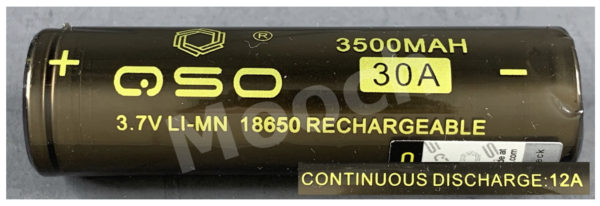
A BATTERY MOOCH POST: QSO 10A 3200mAh 18650…incorrect safety document, DO NOT BUY
This QSO appears identical to, and performs identically to, the LG MH1 which a 10A, 3200mAh (nominal) cell.
The boldly printed 30A “max current” rating is useless and can be ignored. Running a 10A cell at 30A increases your risks and results in HUGE amounts of voltage sag. The battery will not run for long at that level, about 87W for a one-battery regulated mod.
QSO told me on July 17th, 2019 that they rewrap Samsung and LG cells. That is no problem at all. But one of the documents I requested from QSO, the Material Safety Data Sheet (MSDS) that lists the chemical composition of the cells and any hazards with those chemicals, says that this cell uses the same “chemistry” as LiPo’s.
QSO says that the testing lab sent them an incorrect MSDS…in February 2018. That is a big problem. No one at QSO noticed anything for almost 1-1/2 years, until I pointed out that the MSDS says they are LiPo’s? QSO is responsible for creating accurate safety documents for their products. Whatever happened, or whatever is going on, this is unacceptable. QSO is still ignoring my requests for the datasheets and they do not have UN38.3 safety test reports either. These safety reports are especially important as they are the most basic of tests to show that the cells can undergo some abuse without venting or bursting. They are required in order to ship Li-Ion cells by certain methods.
If these were LiPo’s that does not mean they are dangerous! If they did use LiPo battery chemistry though it would mean that if they are misused or mishandled they can go into thermal runaway, and possibly burst, at a lower temperature and that their reactions during runaway are more violent than the other Li-Ion chemistries we can use.
The wraps for these cells say “LI-MN” which I am pretty sure QSO wants us to think is lithium-manganese. This is consistent with the chemistry for some non-LiPo cells we use.
So what’s the big deal about having an accurate MSDS? They exist to inform employees and first-responders of the risks involved if they need to handle a spill or fire involving a product. If the MSDS is wrong that would make responding properly harder to do.
An incorrect MSDS would also mean that any vendor importing those cells into their country, like in the EU, would be submitting documents with the wrong info to the authorities. This means the wrong substances are being registered and could affect whether that vendor can sell those cells if the MSDS issues are discovered. I suspect that would be less than good news to the vendors.
If the MSDS is not accurate then QSO needs to fully explain what really happened and correct the MSDS. They also need to get their cells UN38.3 tested. Until this happens this QSO cell gets a Do Not Buy recommendation from me.
Two cells were purchased for the purposes of testing by me.
Ratings graphic and MSDS: https://imgur.com/a/KkIl9wH
Test report: https://bit.ly/2LZcbwG
I want to work for the vaping community full time! If you feel what I do is worth a couple dollars a month and you would like early access to battery availability and testing news and a say in what I test then please consider becoming a patron and supporting my testing efforts: https://www.patreon.com/batterymooch
These tests only note the ESTIMATED ratings for these batteries at the time I tested them. Any battery that is not a genuine Samsung, Sony, Murata, LG, Panasonic, Molicel, or Sanyo can change at any time! This is one of the hazards of using “rewrapped” batteries or batteries from other manufacturers so carefully research any battery you are considering using before purchasing.
Misusing or mishandling lithium-ion batteries can pose a SERIOUS RISK of personal injury or property damage. They are not meant to be used outside of a protected battery pack. Never exceed the battery’s continuous current rating and keep the plastic wrap and top insulating ring in perfect condition
Any rating in my ratings tables can change at any time as different grade cells appear on the market, we get swamped with fakes, or new information becomes available to me. Please, never assume that the ratings in the tables are permanent and will never change! Always download the latest version before considering any cell purchase.
To see how other cells have tested check out this link: https://www.e-cigarette-forum.com/forum/blog-entry/list-of-battery-tests.7436/

A BATTERY MOOCH POST: QSO 25A 2600mAh 18650…overrated, QSO says it’s LiPo, DO NOT BUY
Bottom Line: This overrated QSO appears identical to, and performs identically to, the Samsung 25R which a 20A-rated 2500mAh cell.
But one of the documents I requested from QSO, the Material Safety Data Sheet (MSDS), says that this cell uses the same “chemistry” as LiPo’s. That does not mean they are dangerous! If they do use this chemistry though it would mean that if they are misused or mishandled they can go into thermal runaway, and possibly burst, at a lower temperature and that their reactions during runaway are more violent than the other Li-Ion chemistries we can use.
I was very surprised to see QSO list the same chemistry as used by LiPo’s in their MSDS since that chemistry, lithium-cobalt oxide (LCO), is rarely used anymore in round cells. I am told by those who know a lot more about the battery industry than I do that the price of cobalt is just too high to justify its use for low cost round cells like the ones we use. Well, they’re low cost when manufactured. The markups in price before they get to us are huge.
The wraps for these cells say “LI-MN” which I am pretty sure QSO wants us to think is lithium-manganese. This is consistent with the chemistry for some non-LiPo cells we use but is in direct conflict with QSO’s claim that these are LiPo’s in their MSDS. There is no manganese in a LiPo cell.
So what’s the big deal about having an accurate MSDS? They exist to inform employees and first-responders of the risks involved if they need to handle a spill or fire involving a product. If the MSDS is wrong that would make responding properly harder to do.
An incorrect MSDS would also mean that any vendor importing those cells into their country, like in the EU, would be submitting documents with the wrong info to the authorities. This means the wrong substances are being registered and could affect whether that vendor can sell those cells if the MSDS issues are discovered. I suspect that would be less than good news to the vendors.
If you believe the MSDS is accurate then QSO is using the same chemistry as LiPo’s for these cells. With all of the other cells we can buy though why would we buy ones that use the same chemistry as LiPo‘s (with its increased volatility)? If the MSDS is not accurate, and these cells are rewraps, then QSO needs to explain why this safety document says they are LiPo’s. Either way, this earns this QSO cell a Do Not Buy recommendation from me.
Two cells were purchased for the purposes of testing by me.
Ratings graphic and MSDS: https://imgur.com/a/ekMReeb
Test report: https://bit.ly/30AoLq5
I want to work for the vaping community full time! If you feel what I do is worth a couple dollars a month and you would like early access to battery availability and testing news and a say in what I test then please consider becoming a patron and supporting my testing efforts: https://www.patreon.com/batterymooch
These tests only note the ESTIMATED ratings for these batteries at the time I tested them. Any battery that is not a genuine Samsung, Sony, Murata, LG, Panasonic, Molicel, or Sanyo can change at any time! This is one of the hazards of using “rewrapped” batteries or batteries from other manufacturers so carefully research any battery you are considering using before purchasing.
Misusing or mishandling lithium-ion batteries can pose a SERIOUS RISK of personal injury or property damage. They are not meant to be used outside of a protected battery pack. Never exceed the battery’s continuous current rating and keep the plastic wrap and top insulating ring in perfect condition.
Any rating in my ratings tables can change at any time as different grade cells appear on the market, we get swamped with fakes, or new information becomes available to me. Please, never assume that the ratings in the tables are permanent and will never change! Always download the latest version before considering any cell purchase.
To see how other cells have tested check out this link: https://www.e-cigarette-forum.com/forum/blog-entry/list-of-battery-tests.7436/









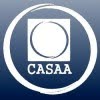





 Store
Store
